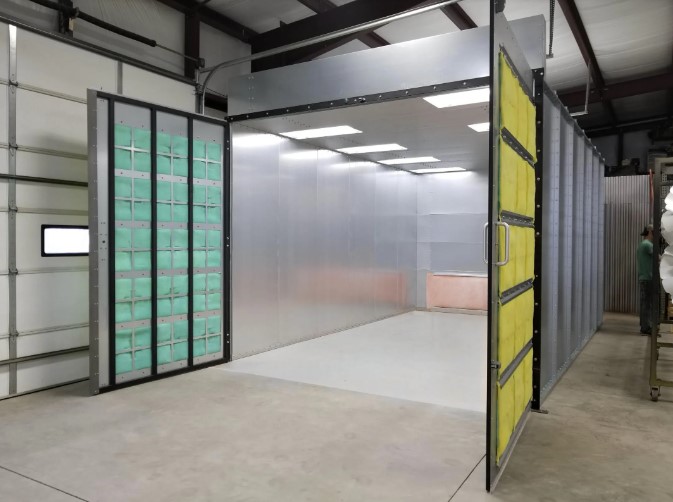Too Many Employees Cash Out Their 401(k)s When Leaving a Job
Statistically, you will likely alter work quite a few instances in advance of retiring. In simple fact, a Pew Investigate survey estimated that 30{3df20c542cc6b6b63f1c547f8fb389a9f235bb0504150b9df2ff264aa9a6c16c} of American employees adjusted work opportunities in 2022 by yourself, most for bigger spend. But accomplishing so can be treacherous for your capability to retire when you want and with the way of living you want. Why? Mainly because far too numerous individuals income out their full 401(k)s whey they leave a work — and companies do tiny to stop it.
In accordance to Vanguard information from 2021, the median 401(k) account for a 55- to 64-calendar year-old was $89,716. That won’t consider a middle-course particular person very significantly, even with lover retirement cost savings, Social Stability, and other sources of retirement income. These lower balances occur inspite of an amplified emphasis from employers, the money expert services industry, and private finance gurus on serving to workforce accumulate retirement savings as a result of employer-sponsored retirement programs. Several corporations now have generous match premiums aimed to draw in and retain the most effective workforce and to assure money protection in retirement.
Having said that, the target on savings accumulation during work misses a key fact: In the U.S., employees can hard cash out at any time they are doing work or when they go away a career. Among the developed economies, only the U.S. makes it possible for corporations to present this choice to a departing staff. Workforce also pay out money tax, and for withdrawals just before age 59.5, they’ll pay 10{3df20c542cc6b6b63f1c547f8fb389a9f235bb0504150b9df2ff264aa9a6c16c} in penalties.
As well usually, departing workforce cash out their 401(k)s when they improve employment, dissipating all that they saved while doing work. Several companies see this as a problem. But pretty much no conclusion an worker will make can so undercut retirement preparedness.
Why and When Persons Funds Out Their 401(k)s
To improved fully grasp how common 401(k) funds outs are when someone leaves a task, our the latest exploration researched 162,360 exiting personnel in the U.S. included by 28 retirement options. They left their corporations in a a few-year interval right before Covid-19, from 2014 to 2016.
Shockingly, 41.4{3df20c542cc6b6b63f1c547f8fb389a9f235bb0504150b9df2ff264aa9a6c16c} of workforce cashed out 401(k) discounts on the way out the door. Equally shocking was that 85{3df20c542cc6b6b63f1c547f8fb389a9f235bb0504150b9df2ff264aa9a6c16c} of those who did dollars out drained the total stability.
Did they have to have to? It’s tricky to know for positive, but it is by no means a logical conclusion that cashing out is a good or important response to leaving or losing a work. We see this the two in our study and in extra new information. For example, we estimated that only 27.3{3df20c542cc6b6b63f1c547f8fb389a9f235bb0504150b9df2ff264aa9a6c16c} of the employees we analyzed experienced misplaced their work (as opposed to leaving voluntarily). And other nations around the world require a lot of months of unemployment and evidence of distinct hardship ahead of permitting an individual to tap defined contribution retirement discounts.
Even further, in the U.S., sector scientific tests demonstrate that cashing out stayed flat or a little bit declined throughout the Covid pandemic irrespective of significant raises in career decline. How did all individuals new waves of unemployed persons cope? They relied on a combination of short term lifestyle variations, gig do the job, and government added benefits, heeding phone calls like that from Carrie Schwab-Pomerantz, the president of the Charles Schwab Foundation, who recommended men and women to steer clear of using peaceful guidelines on withdrawals throughout the pandemic below the CARES act:
“Even if it is attainable to borrow from your 401(k) or consider a distribution … look at this a final resort. Even though current situations could be difficult, I’d counsel anyone to stay away from jeopardizing their long term retirement unless of course definitely needed. You may possibly not recognize the complete penalties until significantly later.”
The 41.4{3df20c542cc6b6b63f1c547f8fb389a9f235bb0504150b9df2ff264aa9a6c16c} funds-out determine at work exit in our data also dwarfed the quantity cashing out all through their many years of employment. When utilized, people today had loads of options to have a funds crunch from situation like associate job loss, health-related emergencies, weddings to prepare, impending college or university payments, and they faced the exact taxes and penalties for early withdrawal. Nevertheless only 7{3df20c542cc6b6b63f1c547f8fb389a9f235bb0504150b9df2ff264aa9a6c16c} cashed out via hardship withdrawal and 3{3df20c542cc6b6b63f1c547f8fb389a9f235bb0504150b9df2ff264aa9a6c16c} by using 401(k) financial loans that had been not repaid on time. We calculated that greenback losses to income outs at occupation alter had been 12.4 situations what these 162,360 workforce cashed out all through their regular 6.6 a long time at their corporations.
So why do so many people today money out at a occupation change especially and undermine their retirement safety? Why not roll their 401(k) equilibrium to an IRA or a Roth or Roth IRA, maintain cash in their employers’ programs, or transfer assets to new employers’ options if available?
The troubles appear from paperwork and psychology. Companies delegate all communication when an staff leaves to financial companies firms like Fidelity, Vanguard, TIAA, or Alight, who administer their plans. These designs deliver anodyne variety letters to workers with points about what their solutions are, but not advice. In addition, the variety letter, by law, lets employers to give a lot less interesting solutions to exiting workforce if they have decreased balances. For instance:
- Most workforce with balances less than $1,000 are instantly issued a look at of their cost savings minus money tax and 10{3df20c542cc6b6b63f1c547f8fb389a9f235bb0504150b9df2ff264aa9a6c16c} penalties, with no other possibilities presented.
- Most personnel with balances concerning $1,000 and $5,000 are specified two other solutions to cashing out: to roll above belongings into a qualified IRA or to transfer to a new employer’s program.
- Most employees with balances in excess of $5,000 are offered a few options to cashing out: to hold their cash in the present prepare, to roll more than property into a certified IRA, or to transfer to a new employer’s program.
Critically, these variety letters make the possibility to money out far extra front-of-brain than it was during a long time of employment. They switch psychologically illiquid retirement price savings into a resource of prepared cash. When exiting staff members are nudged to take into consideration the solution to hard cash out, it gets to be pretty pleasing to shell out what had previously been viewed as an untouchable supply of retirement safety. No surprise so numerous far more money out when changing work than when operating.
We also find persons act on that temptation to money out far more strongly when they contributed proportionally much less to their whole 401(k) harmony — keeping consistent the dimension of the equilibrium and other employee features. We call this sample the “account composition outcome.”
The sample we observed was the same for workforce with bigger or decrease 401(k) balances, higher or decreased earnings, guys or girls, more mature or youthful workforce, and those people who left the agency in months with large or minimal turnover. All explained to, the a lot more the balance came from the employer, the much more folks treat their personal savings as “house money” or “free money” when prompted at work alter to take into consideration the choice to dollars out.
How Businesses Can Assist Departing Workforce
The lesson from our results is not that businesses need to lead a lot less in employer matches. The lesson is that a socially liable employer should really pay back notice to employees when they are leaving the organization, too. Corporations with extra generous retirement matches of course intend to supply for worker economical well-being decades down the highway. And most know that lots of of their present workers will transform work opportunities — numerous periods — before their eventual retirement. Employers’ indifference to income-outs is undermining their financial investment in their employees’ futures. Appropriate now, cashing out is the route of the very least resistance. Men and women select what is simple, not what is intelligent.
Businesses could acquire actions to radically improve employees’ retirement safety at a pretty very low expense to them. For case in point, there is growing recognition that cashing out is extra probably if persons deficiency crisis discounts. The new Safe 2. Act that grew to become law in December 2022 permits employees to routinely allocate up to $2,500 per calendar year to pay back for emergency expenses with no raiding their retirement fund. When onboarding new staff members and outlining retirement positive aspects, companies could motivate use of these accounts and forewarn new workforce of the threat cashing out at the level they later improve work opportunities.
Businesses could also agreement with their financial expert services companions to present World wide web-enabled “just-in-time economic education” around preserving retirement balances throughout a occupation improve, or spend for a session with a economical advisor. Equally, companies could shell out fiscal products and services companies to perform an exit conference to assist particular person workforce examine if they really should retain their belongings in their recent plan, transfer property to their new employers’ prepare, or have their 401(k) balance immediately transferred to extremely reduced-price tag Roth IRA index resources. All of these alternatives preserve personnel retirement stability and stay clear of 10{3df20c542cc6b6b63f1c547f8fb389a9f235bb0504150b9df2ff264aa9a6c16c} penalties — and all of these possibilities need to be simpler than cashing out.
Along these very same traces, we advocate that corporations stop mechanically cashing out workforce with modest balances. There are some rising approaches to make this a lot easier for case in point, a new “auto-portability” initiative by Retirement Clearinghouse automates the system of transferring balances underneath $5,000 from the existing employer to the new employer’s program if the two employer approach sponsors are served by important monetary solutions firms like Vanguard, Alight, and Fidelity.
If field does not clear up this dilemma of retirement personal savings remaining drained at work improve, neither businesses nor monetary services companies might like what will come subsequent. Governments may well phase in to produce new methods extra like these in other areas of the earth, like Australia. There, all corporations will have to add the same total, all employees will have to add the exact same sum, and the account stays with staff members when they adjust employment — and workforce can’t obtain their balance right until just after prolonged unemployment.
We think the more possible circumstance is that corporations solve the problem, with companies working with economic products and services corporations to make small variations with extraordinary potential to modify personnel retirement readiness. There are big positive aspects to the businesses in a aggressive market for expertise and to fiscal companies companies who acquire the direct in fixing this pressing societal issue.




:quality(70)/cloudfront-eu-central-1.images.arcpublishing.com/irishtimes/SL4ZJEXTC5DIXNN4OZFLJTU4UE.jpg)

